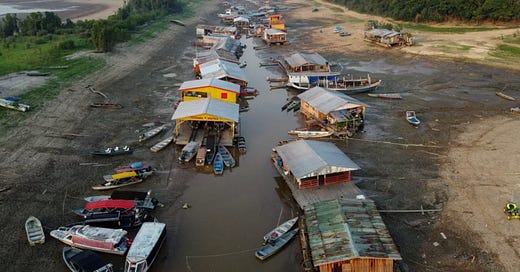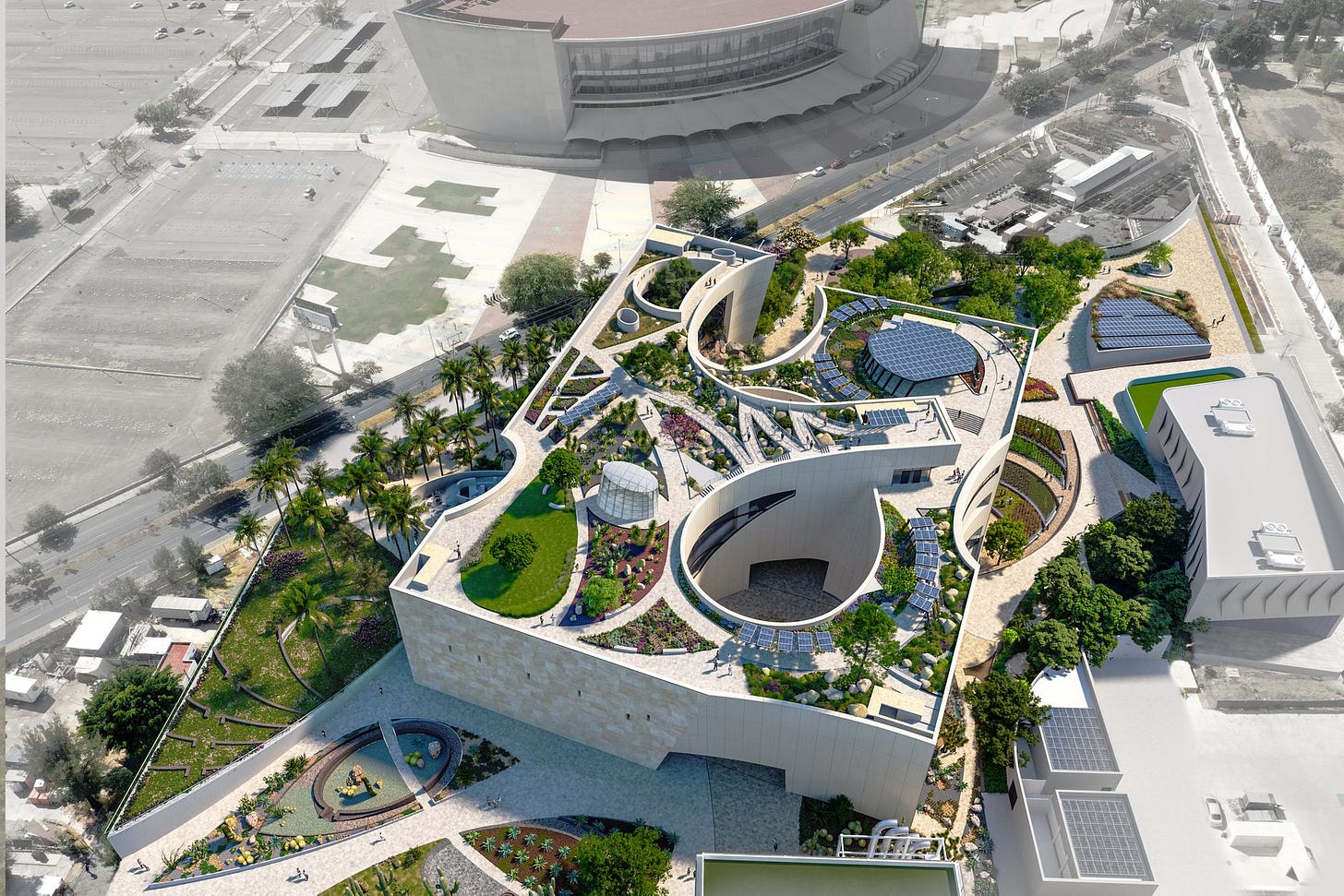
Severe Drought Impacts Hundreds of Thousands in Brazil's Amazon
Short on time? Get a quick rundown of today’s top stories from the ACR:
An extreme drought in Brazil's Amazon region is causing water shortages that are impacting communities, wildlife, and the economy. Over 300,000 people have been affected in the state of Amazonas, leading to a state of emergency.
The U.S. Department of Energy announced a USD 3 billion loan guarantee program to make rooftop solar, battery storage, and demand-response software more accessible in the United States and Puerto Rico.
This week, I’m excited to announced a new section in the newsletter: Research Corner. Here at the ACR, my goal is to always provide readers with the most updated and relevant climate and sustainability information. After just 16 editions, it became clear to me that there are always new and different ways to achieve this. However, not everyone has the time to delve deep into the newest (and often lengthy) academic research released in this field. Therefore, starting this week, I will do that for you! This section will summarize complex information into simple and easy-to-read paragraphs, replacing the previous Resources & Recommendations section. I hope you enjoy!
Severe Drought Impacts Hundreds of Thousands in Brazil's Amazon
Associated Press, CNN, Reuters, & Voz de America
An extreme drought in Brazil's Amazon region is causing water shortages, impacting communities, wildlife, and the economy. The low water levels have affected more than 300,000 people in the state of Amazonas, leading the state's governor to declare a state of emergency in late September. This situation has been exacerbated by the El Niño climate phenomenon and global warming. Several countries in South America, including Brazil, Paraguay, Bolivia, and Argentina, have recently experienced unprecedented winter heatwaves, resulting in extreme temperatures. The drought in the Amazon has disrupted ship traffic and increased shipping costs in the region, which poses risks for corn exports and could potentially disrupt grain exports. While the Brazilian government has established a humanitarian task force to coordinate a response, it is anticipated that the situation will worsen and may persist until 2024.
U.S. Launches Billion-Dollar Residential Solar Project with Puerto Rico in Mind
Recently, the U.S. Department of Energy announced a USD 3 billion loan guarantee program to Sunnova Energy, a residential solar company operating in the United States and Puerto Rico. The program, named Project Hestia, aims to make rooftop solar, battery storage, and demand-response software more accessible to households facing high energy bills and frequent power outages. At least 20% of the loans will be provided to customers with low credit scores, and 10-20% will be allocated to Puerto Rico. This initiative represents the largest commitment from the federal government to solar energy and has the potential to benefit up to 115,000 homeowners in the U.S. Additionally, it is expected to reduce CO2 emissions by 7.1 million tons over the next 25 years.
Mexico is building the largest museum in the Americas for Environmental Sciences in the city of Guadalajara. The Environmental Sciences Museum of the University of Guadalajara will feature themed gardens, permanent and temporary exhibition galleries, classrooms for school workshops, an auditorium, and a community development laboratory. The project, which focuses on sustainability and education, aims to be a space for the poorest families and a catalyst for socio-ecological transformations in its neighborhood.
Despite facing budget delays, the museum is 80% completed, and is expected to gradually open its doors starting in November 2023.
Financing the Energy Transition in Latin America and the Caribbean: An Incomplete Puzzle
Publisher: Center on Global Energy Policy, Columbia University
Author: Luisa Palacios
Publication Date: September 28, 2023
Access the report here.
This report analyzes the financing challenges of energy transition in Latin America and the Caribbean (LAC), emphasizing the need for increased investments in clean and sustainable energy sources. It discusses the decline in LAC's share of global energy and clean investments, raising concerns about funding for the energy transition. To address this, the author highlights the importance of mobilizing private finance through mechanisms like public-private partnerships and green bonds.
The report also emphasizes the investment needs for renewable generation capacity in LAC, stressing the billions of dollars required. It highlights the importance of regional interconnection and collaboration among LAC countries. Financial gaps for mitigation and adaptation activities are addressed, demonstrating the need for increased climate finance to support LAC's efforts in reducing greenhouse gas emissions and adapting to climate change.









